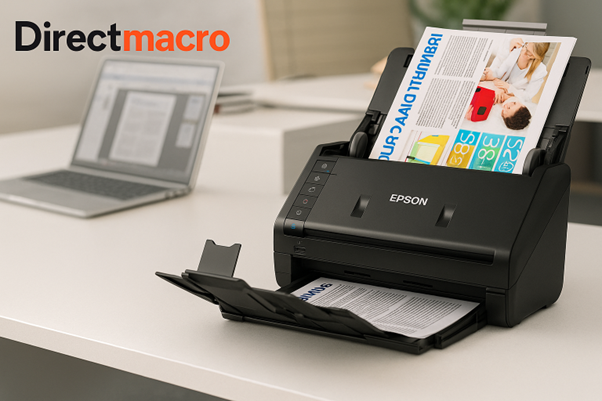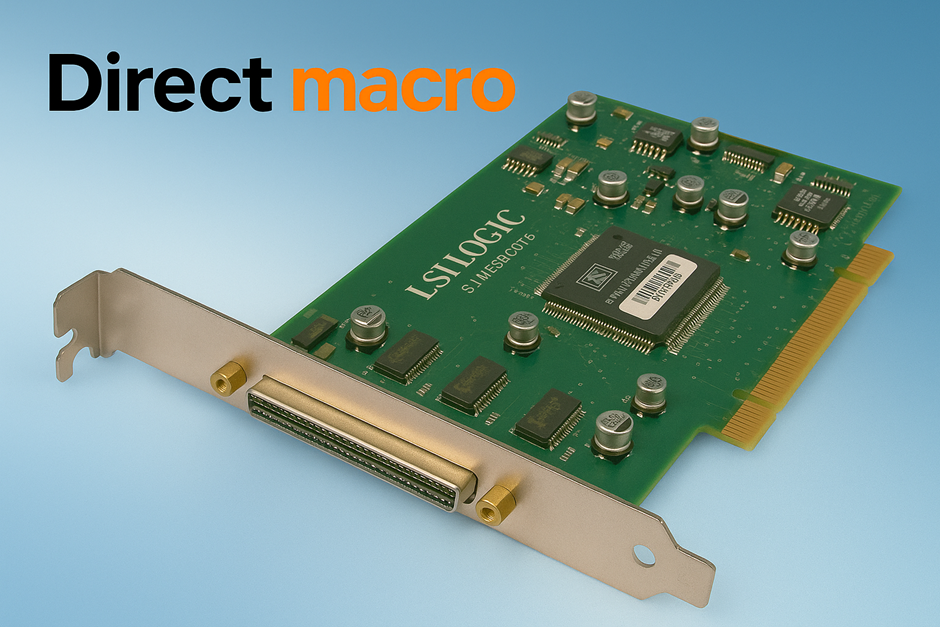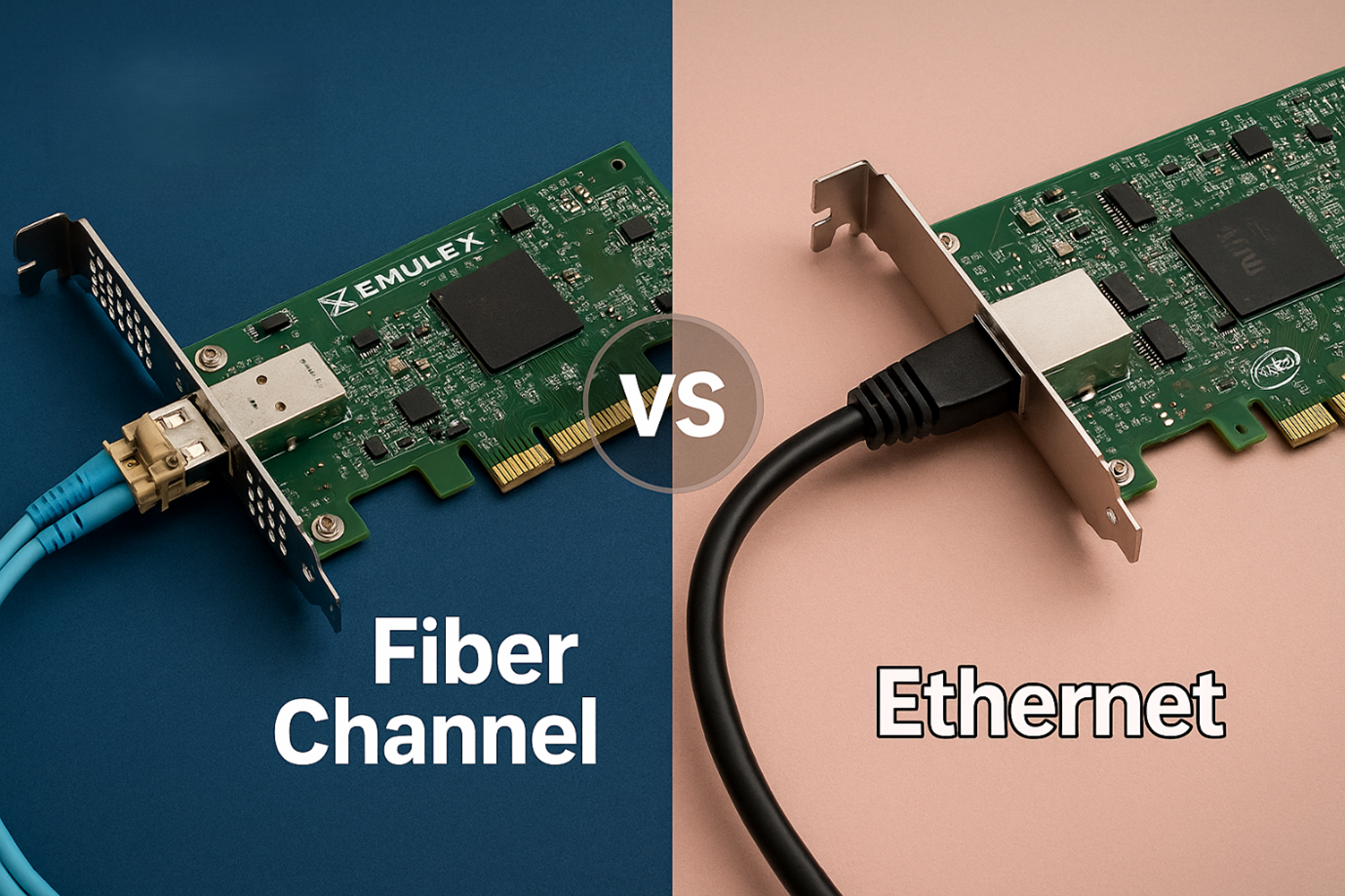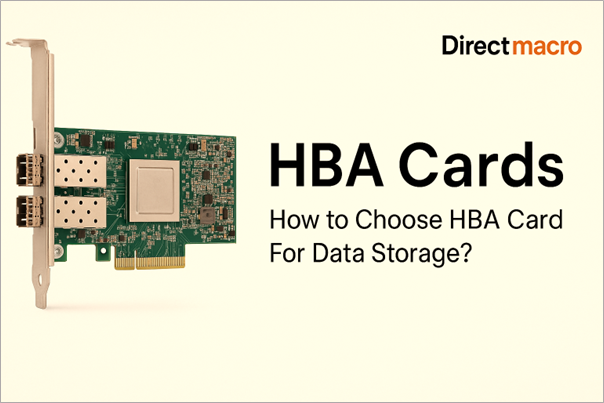Scanner Buying Guide: Best Scanners for Offices and Home Use
Choosing the right scanner for home and office use is very important. There are many types of scanners available in the market. They range from cheap flatbed scanners to expensive high-speed scanners, which are hooked to a network. Choosing the wrong scanner will result in poor-quality scans and wasted time.
This detailed guide will save time on determining what features are essential and help avoid any mistakes. The right scanner can help automate a very paper-intensive process for better document management. After the documents are scanned, they can be saved in a digital format and searched, shared, and backed up.
Key Features for Home and Office Scanners
To choose a scanner, you must grasp its fundamental capabilities. The characteristics below are important, from scan quality to digital file management software. If you run a small business or want reliable home scanner recommendations, paying special attention to these parameters helps you know how to choose a scanner that suits your long-term needs.
1. Resolution (DPI) and Image Quality
Resolution is measured in DPI (dots per inch), which determines detail. A higher DPI produces clearer, more detailed images. 300 DPI is usually enough for sharp text and acceptable images in regular document scanning. If you want to scan photos, artwork, or documents with very fine print for archiving, use 600 DPI or 1200 DPI for superior results. Make sure that the optical resolution is accurate, rather than relying on the interpolated software-enhanced number.
2. Scanning Speed and Document Capacity
Pages Per Minute (PPM) or Images Per Minute (IPM) are common units of measurement for scanning speed. IPM is twice as fast as PPM because it allows for duplex (two-sided) scanning. For high-volume office environments, quick speeds (40+ PPM) and a big Automatic Document Feeder (ADF) capacity (50-100 sheets) are non-negotiable productivity boosters. Home users can typically get by with slower speeds and smaller ADFs, but for bulk scanning, a large capacity will save you time.
3. Connectivity Options (USB, Wi-Fi, Bluetooth, Cloud)
Current scanners provide versatile options for connection and data sharing. USB connection is reliable and offers a fast and stable connection to a single computer. Remote access through Wi-Fi is now a standard feature for many offices and home scanner recommendations. They are providing access to multiple users and making mobile device scanning easier. Top-tier scanners permit direct scanning for various cloud services, such as Dropbox and Google Drive, making computers unnecessary and enhancing off-site storage and collaboration.
4. OCR (Optical Character Recognition) Capabilities
OCR software converts scanned images of text into editable and searchable text, making it simple to use. OCR saves time and is useful for both office and home use. You can do more than simply have an image of a document. OCR allows you to copy text, search an entire archive of scanned documents for text, and manipulate and reformat data. Most high-quality document scanners come with multilingual software that includes advanced OCR capabilities. This collection of OCR software increases the value of a document scanned using a high-quality document scanner.
5. Compatibility with Operating Systems and Apps
Scanners do not perform well if they are incompatible with your systems’ software and offerings. Before making new purchase, you must ensure that your operating system, whether Windows, Mac, or Linux, is compatible with the scanner and that it has the most recent drivers and software. Consider the scanner that offer mobile apps for scanning and standard drivers such as TWAIN and WIA, which ensure compatibility with a wide range of third-party document management, accounting, and editing applications.
Types of Scanners
A dedicated, high-speed document scanner is the only option for organizations that want to maximize efficiency. These types of scanners provide an overview of the specifications that define the best scanners for office use, with a focus on performance and capacity for high-volume workflows. When conducting a comprehensive scanner purchasing guide analysis for your business, these are the models that set the standard for speed and dependability.
1. Dedicated Document Scanners
These offer the best scanners for office efficiency and specifically designed for high-volume and continuous batch scanning workflows. Key scanner features explained include high speeds (PPM/IPM) and large Automatic Document Feeder (ADF) capacity. When you conduct an office scanner comparison, these models often lead in durability and software features. If speed and high volume scanning is your priority, you can choose dedicated document scanners.
2. Flatbed Scanners
Flatbed models are essential for scanning books, fragile documents, or irregularly sized items, but it not suitable option for an ADF. Our how to choose a scanner guide suggests these scanner type for high-quality image capture, where detail matters more than speed. They are a good entry point when looking at home scanner recommendations for varied use.
3. Sheet-fed Scanners (Portable/Desktop)
If you are looking for flexible home scanner recommendations or need a compact device, these are ideal. Sheet-fed scanners are included in any thorough office scanner comparison for their smaller footprint and portability. The main scanner features explained are simplicity, ease of use, and decent speed for personal tasks.
4. Multi-Function Printers (MFPs) / All-in-One Devices
Often found in mid-sized organizations, these offer a cost-effective choice in an office scanner comparison. Multi-Function Printers/Scanners combine print, copy, and scan functions. While not offering the high performance of the best scanners for office use, their integration and versatility are key considerations when asking how to choose a scanner for a small team.
Best Home Scanners for Everyday Use
When it comes to personal or small home office scanners, the focus shifts to being flexible, simple to use, and taking up less space. Here are three of the best home scanners from different brands, chosen for their dependability and good mix of features that make them great for scanning photos and documents every day.
1. Canon CanoScan LiDE 400 (Flatbed)
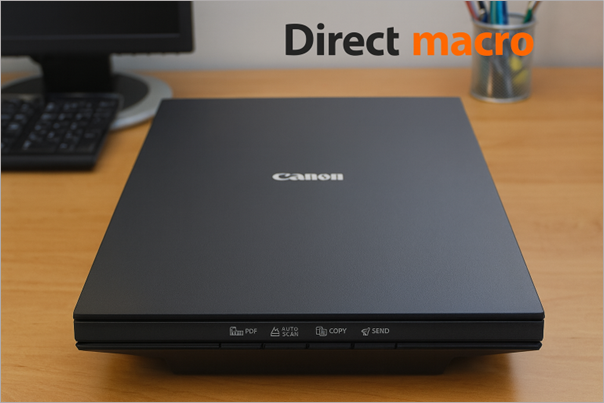
Specifications
| Specification | Details |
| Type | Flatbed |
| Optical Resolution | 4800 x 4800 dpi |
| Scanning Speed | Approx. 8 seconds (A4/300 dpi) |
| Power | USB-Powered (No separate AC adapter needed) |
| Features | EZ-Buttons, Z-Lid for thick documents |
Reasons to Buy
- Superior Photo Quality: Canon CanoScan LiDE 400 is a great home scanner because the 4800 DPI resolution makes it great for digitizing photos and artwork with lots of small details that making it a strong home scanner recommendation for hobbyists.
- Space-Saving and Portable: It’s easy to store upright and use on any desk thanks to its thin, compact design and USB-only power.
- Affordability: This is one of the most cost-effective ways to scan photos at a high resolution.
Reasons to Avoid
- Slow for Documents: Since it’s a flatbed, you can only scan one page at a time; you can’t scan many pages at once.
- No ADF or Duplex: Doesn’t have an Automatic Document Feeder, which limits its efficiency for working with documents with many pages.
2. Epson Work Force ES-50 (Portable Sheet-fed)
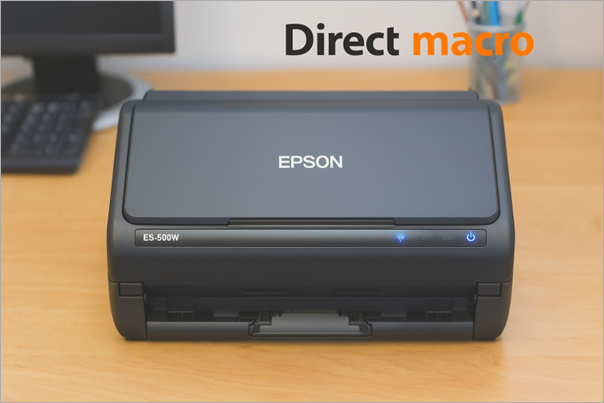
Specifications
| Specification | Details |
| Type | Portable Sheet-fed (Manual Feed) |
| Optical Resolution | 600 dpi |
| Scanning Speed | Up to 5.5 seconds per sheet |
| Power | USB-Powered |
| Features | TWAIN driver included, one-touch scanning |
Reasons to Buy
- Maximum Portability: Epson Work Force ES-50 is very small and light weighted, so it is perfect for professionals who travel a lot or who don’t have a lot of desk space. It fits easily in a bag.
- Versatile Media: It can handle documents, receipts, and ID cards that makes it an excellent all-rounder for small businesses and mobile offices.
- Simple Setup: It powered directly by a USB connection that eliminate the need for bulky adapters.
Reasons to Avoid
- Manual Feed Only: It requires feeding pages one by one, which is slow for even moderate volumes.
- No Wi-Fi: Requires a direct USB connection to a computer for operation.
3. Brother ADS-1200 (Compact Sheet-fed with ADF)
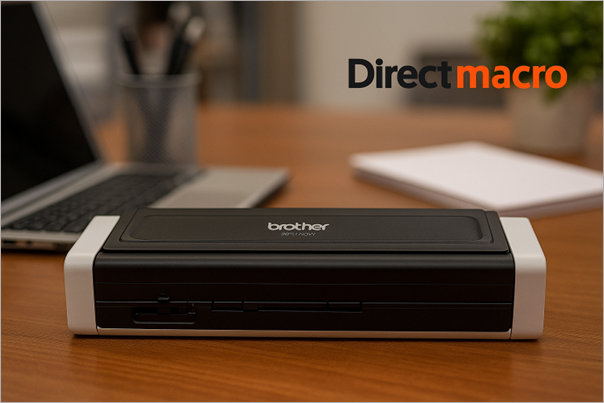
Specifications
| Specification | Details |
| Type | Compact Desktop Sheet-fed |
| Optical Resolution | 600 dpi |
| Scanning Speed | Up to 25 PPM / 50 IPM (Duplex) |
| Power | AC Adapter / USB 3.0 Bus Power |
| Features | 20-sheet ADF, dedicated card slot, scan to USB drive |
Reasons to Buy
- Excellent Productivity: The 20-sheet ADF and single-pass duplex scanning make quick work of small batches of documents that make Brother ADS-1200 scanner a great trait for a home scanner recommendation.
- Flexible Power: Can be powered by a wall outlet or a single USB 3.0 port that improve portability and setup flexibility.
- USB Host: It allows you to scan directly to a connected USB flash drive without having a computer and help in simplifying workflow.
Reasons to Avoid
- No Wi-Fi: it requires a physical connection to a network or PC for full functionality due to lackness of wireless connectivity.
- Photo Quality: While 600 DPI is fantastic option for documents but it’s not perfect for professional-level photo archiving compared to a high-DPI flatbed device.
Best Office Scanners for High Volume Scanning
The best scanners for office are those designed for large daily duty cycles and seamless network integration for high-demand corporate settings, legal firms, or accounting departments. These choices prioritize speed, advanced paper-handling, and robust software, essential elements in any office scanner comparison.
1. Brother ADS-4900W (High-Volume Network Scanner)
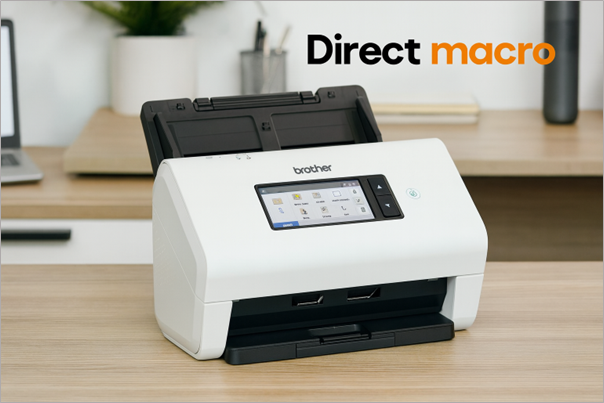
Specifications
| Specification | Details |
| Type | Desktop Sheet-fed |
| Optical Resolution | 600 dpi |
| Scanning Speed | 60 PPM / 120 IPM (Duplex) |
| ADF Capacity | 100 sheets |
| Features | 4.3″ Touchscreen, Wi-Fi, Ethernet, USB 3.0, Scan to Cloud/Network |
Reasons to Buy
- Blazing Speed and Capacity: Brother ADS-4900W (High-Volume Network Scanner) is a true best scanner for office situations, with a 100-sheet ADF and 60 PPM for high-volume and continuous batch processing.
- Full Connectivity: It includes Wi-Fi, Ethernet, and USB 3.0 that allow an easy network sharing and centralized management.
- Advanced Software: It comes with a comprehensive software suite that includes excellent OCR and picture enhancement capabilities.
Reasons to Avoid
- Large Footprint: It takes up more desk space than other compact models.
- High Initial Cost: This model is little more expensive than entry-level and home-use models.
2. Fujitsu ScanSnap iX1600 (Smart Workflow Document Scanner)
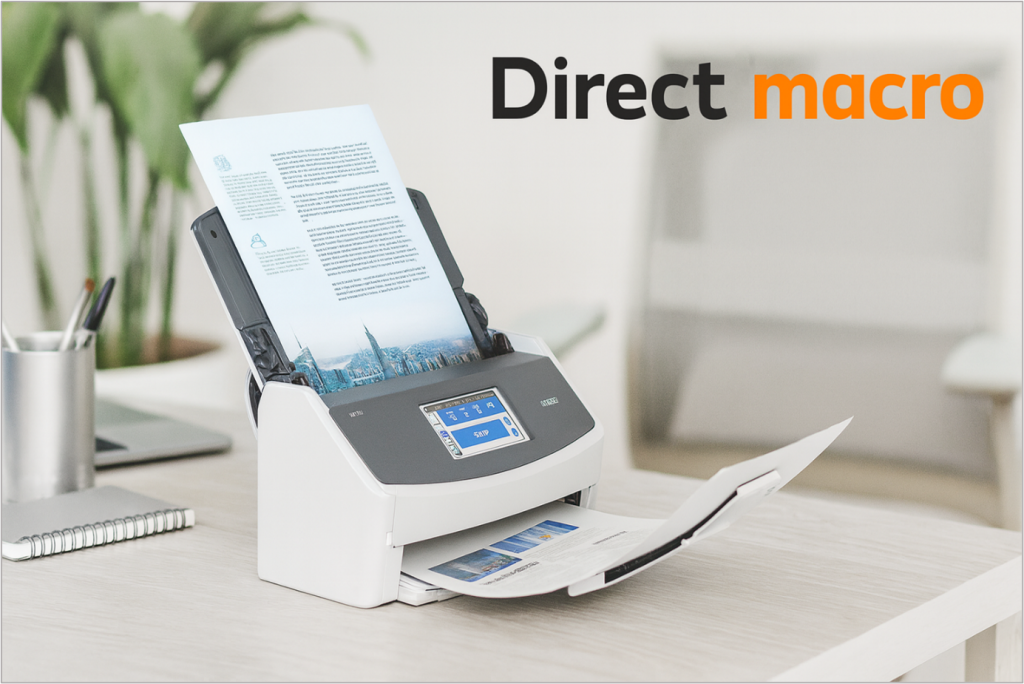
Specifications
| Specification | Details |
| Type | Desktop Sheet-fed |
| Optical Resolution | 600 dpi |
| Scanning Speed | 40 PPM / 80 IPM (Duplex) |
| ADF Capacity | 50 sheets |
| Features | 4.3″ Touchscreen, Wi-Fi, ScanSnap Home Software, Multi-User Profiles |
Reasons to Buy
- Exceptional Ease-of-Use: The large touchscreen and one-touch scanning profiles make Fujitsu ScanSnap iX1600 (Smart Workflow Document Scanner) incredibly intuitive for multiple users.
- Superior Software: The ScanSnap Home software is famous for its excellent OCR, automatic document classification, and organization.
- Reliable Feeder: Industry-leading paper separation technology reduces misfeeds and jams.
Reasons to Avoid
- Proprietary Software: It uses its own ScanSnap Manager software, which is not TWAIN/ISIS compliant, possibly limiting compatibility with some third-party professional applications.
- Lower Capacity: The 50-sheet ADF is smaller than some competitors, which may be a limitation for the highest-volume businesses.
3. Canon image FORMULA DR-M160II (Professional Heavy-Duty Scanner)
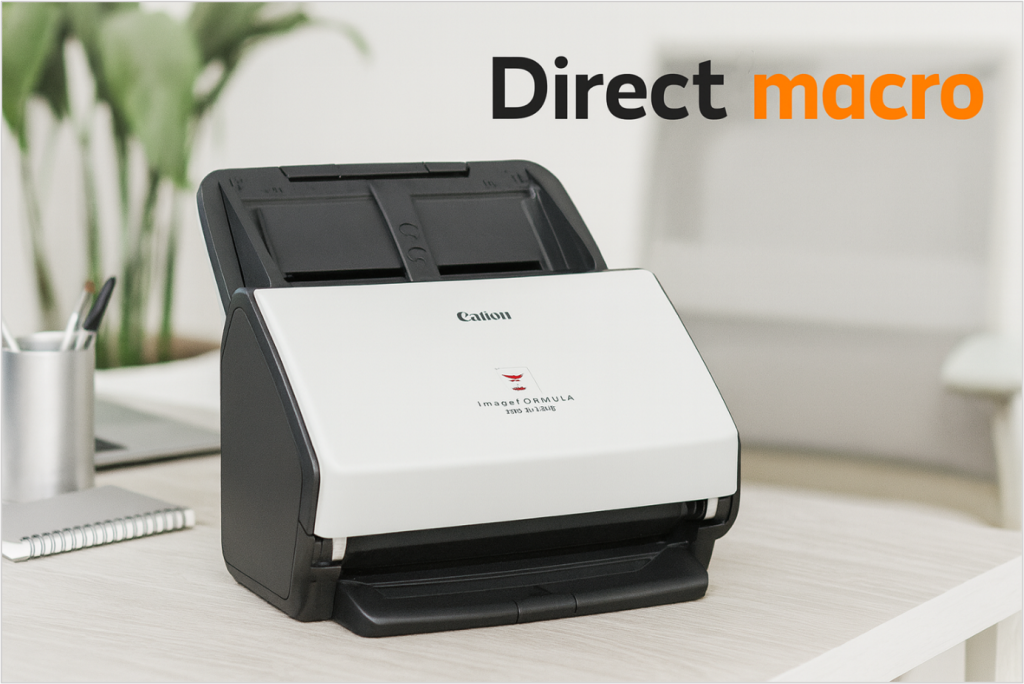
Specifications
| Specification | Details |
| Type | Desktop Sheet-fed |
| Optical Resolution | 600 dpi |
| Scanning Speed | 60 PPM / 120 IPM (Duplex) |
| ADF Capacity | 60 sheets |
| Features | High daily duty cycle (7,000 scans), Eject switch for card/thick media |
Reasons to Buy
- Robust Durability: Canon image FORMULA DR-M160II are designed with a very high daily duty cycle which makes it ideal for continuous, industrial-strength scanning in demanding sectors like legal or finance.
- Versatile Paper Handling: This scanner is excellent for mixed batch scanning, accurately handling documents, card stock, and plastic cards within the same job.
- Bundled Pro Software: Includes Canon’s Capture on Touch and Kofax Virtual Re Scan Basic for advanced image processing and high-accuracy OCR.
Reasons to Avoid
- USB Only: This model lacks built-in ethernet or Wi-Fi networking that requires connection to a dedicated PC or server.
- Higher Price Point: It is a heavy-duty model means a higher upfront cost compared to standard workgroup scanners.
Tips for Choosing the Right Scanner Type
Choosing the right model is a balance between function and price. By focusing on these smart buying tips helps you to avoid common mistakes and you can get a powerful scanner that won’t break your budget.
1. Match Duty Cycle to Your Volume
Don’t pay more for what you won’t use. If someone at home is scanning 20 pages a week, they definitely do not need a 7,500-page-per-day scanner. Check the daily duty cycle in the specifications; this is the most honest metric of a scanner’s durability and target workload. For home scanner recommendations, a cycle of a few hundred pages is more than enough. while the best scanners for office should be rated for thousands.
2. Prioritize Single-Pass Duplex Scanning
If you frequently scan double-sided documents (which most offices do), make sure that the scanner offers single-pass duplex scanning. This means it scans both sides of the page simultaneously using two camera sensors. Scanners that require the sheet to be fed twice or flipped manually are significantly slower and less efficient, negating the value of a high PPM rating.
3. Where to Buy Scanners Online or in Stores
Purchasing online typically offers the best office scanner comparison pricing and a wider range of high-end models, especially for specialized document scanners. Look for authorized resellers to ensure the warranty is valid. Buying in-store allows you to see the size and build quality, but inventory may be limited to more common flatbed or all-in-one models. Always check reputable tech sites such as Direct macro for current deals and bundled software offers.
4. Warranty and After-Sales Service Tips
Carefully read the warranty’s small print. Document scanners that handle a lot of documents should come with a guarantee that lasts at least a year and ideally includes a quick replacement service. Read reviews from other customers to find out how good the manufacturer’s customer service is. Bad service after the sale can turn a small technical problem into a big loss of output. As these parts wear out over time, make sure that you can get cheap official roller replacement kits.
5. Avoiding Common Scanner-Buying Mistakes
The two biggest mistakes are:
- Buying an All-in-One for High Volume: Multi-Function Printers (MFPs) are great for light use, but their scanner components are generally slow and lack the robust paper handling needed for frequent batch scanning in an office.
- Ignoring Software/OCR: Assuming all scanners have good software is a mistake. The bundled software and OCR capability are critical. A fast scan is useless if the resulting digital file is a non-searchable, uneditable image.
6. Don’t Neglect Connectivity Requirements
Make sure the scanner you need for your business has Ethernet or Wi-Fi connectivity and the networking features you need, such as the ability to connect to LDAP or scan to FTP. A quick and cheap USB scanner is useless if it is hard to share on a busy network. How to choose a scanner often comes down to connectivity more than speed.
Final Thoughts
This scanner buying guide has illuminated the path to finding the ideal device, emphasizing that the best scanner for you relies entirely on your specific workload. We have covered everything from the essential scanner features explained like DPI and OCR, to conducting a thorough office scanner comparison and getting solid home scanner recommendations.
For the home user, versatility, compact size, and good photo resolution (like the Canon LiDE 400) offer the right balance. For the corporate environment, prioritizing speed, large ADF capacity, and network integration (such as the Brother ADS-4900W) is important for peak performance and efficiency. By matching the duty cycle to your scanning volume and prioritizing features like duplex scanning and reliable OCR, you will successfully navigate the market and find a perfect mix between top-tier performance and value for your money.
To receive swift and dependable assistance for all your computer parts requirements, call us at (855) 483-7810, or get in touch with our specialized team for bulk order inquiries by completing a submission form.
FAQs
- What is the best scanner for office documents?
The best scanners for office use are high-speed and sheet-fed models with a large ADF and duplex scanning, such as the Brother ADS-4900W, which prioritizes productivity and efficiency with powerful OCR. - How often should I clean my scanner?
Cleaning for high-volume office scanners, should be done weekly or every 2,000 pages to prevent dust and roller wear and a monthly wipe-down is sufficient to maintain image quality for a home scanner. - Are portable scanners worth it for home use?
Portable scanners are worthwhile home scanner recommendation If space is severely limited or for quick, occasional single-page jobs like receipt, otherwise, a compact desktop model with a small ADF is more productive. - What resolution (DPI) should I choose for scanning photos?
You should choose a minimum resolution of 600 DPI for scanning photos, but 1200 DPI or higher is recommended to capture the finest details for large prints and archiving, a key factor in any scanner buying guide.
you might also like
Do you need advice on buying or selling hardware? Fill out the form and we will return.

Sales & Support
(855) 483-7810
We respond within 48 hours on all weekdays
Opening hours
Monday to thursday: 08.30-16.30
Friday: 08.30-15.30



